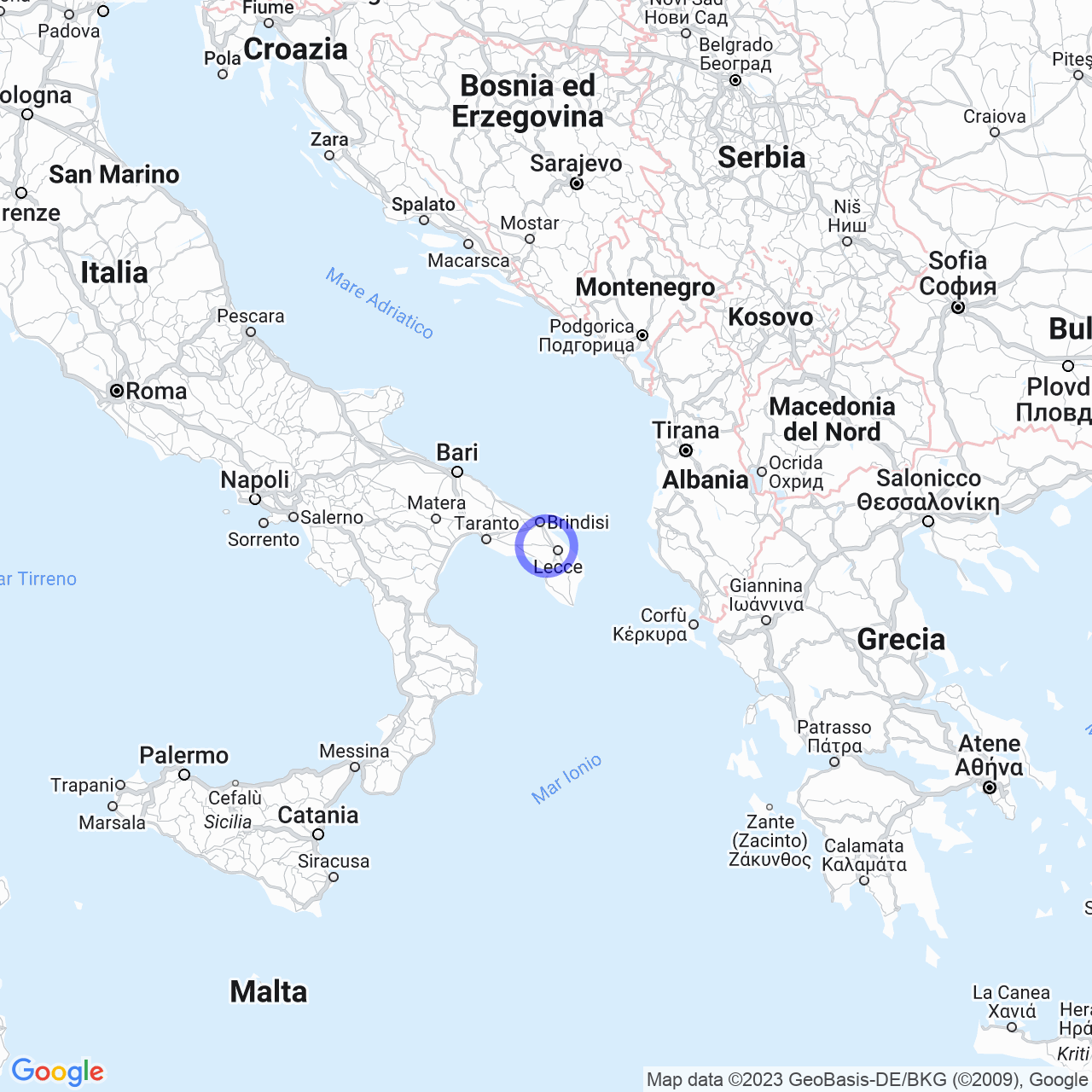Campi Salentina
Welcome to Campi Salentina: an oasis of greenery and history in Salento
Hello everyone! Today I will talk to you about Campi Salentina, a small town in the heart of Salento, in Puglia. With a population of about 9,800 inhabitants, Campi Salentina is one of the greenest and most fertile cities in the region. In 1998, the city was awarded the title of "City of Italy" for its history and cultural importance.
Physical geography
The territory of Campi Salentina is part of the Cupa Valley, a karst depression in Salento. The urban center is located in a natural basin surrounded by the mountains of Sant'Elia and Madonna dell'Alto. The area is characterized by the presence of olive groves, vineyards, tobacco plants, sunflowers, and small wooded areas. The Mediterranean scrubland distinguishes the holiday areas, and there are also fruit trees such as figs, mulberries, and almonds.

Climate
The climate in Campi Salentina is Mediterranean, with mild winters and hot, humid summers. The average winter temperature is around +9°C, while the summer temperature reaches +25.5°C. Precipitation is frequent in autumn and winter, while spring and summer are characterized by long droughts. The wind strongly influences the area, with cold currents of Balkan origin or warm ones of African origin.
The history of Campi Salentina
The name of the city comes from the Greek term "kampia," meaning "little fields," indicating the fertility of the area. The city already existed in the Bronze Age, as demonstrated by the numerous menhirs present throughout the municipal territory.
With the arrival of the Messapians, a population of Illyrian or Aegean-Anatolian origin, the area was inhabited and lived in. During the Roman conquest in 280 BC, the area became increasingly important, and villas and rural houses were built.
During the Middle Ages, Campi Salentina was an important commercial and agricultural center under Byzantine domination, then Norman and Swabian domination. In 1480, the city was conquered by the Turks during the siege of Otranto and was rebuilt only at the end of the 16th century.
What to visit in Campi Salentina
If you are passionate about history, you cannot miss the Campi Salentina Archaeological Museum, which houses a vast collection of artifacts from the Messapians and Romans. The city also boasts numerous churches and chapels such as the Mother Church of Santa Maria delle Grazie, the Church of San Sebastiano, and the Chapel of Santa Maria degli Angeli.
For nature lovers, the surrounding areas of Campi Salentina offer many opportunities for hiking and cycling, with routes that cross olive groves and vineyards. There are also trattorias and restaurants that offer typical cuisine of the area.
Conclusion
Here is my presentation of Campi Salentina, a small but fascinating city, rich in history and nature. I hope my words have made you want to visit it and discover its hidden treasures. See you next time!
